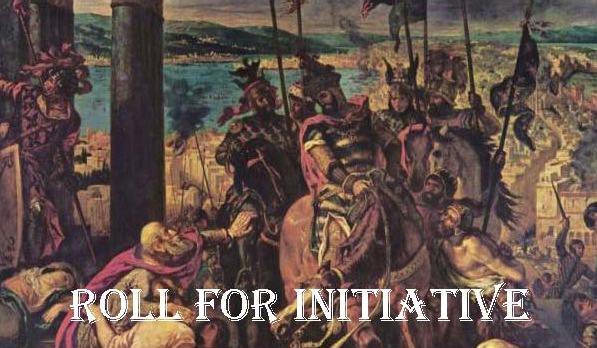Basic RolePlaying does not use an alignment system the way
Dungeons & Dragons or
Pathfinder do. Rather, a character has multiple allegiences and builds up points in them depending on his actions. To use D&D as an example, the GM might decide to create five allegiences; Good, Evil, Law, Chaos and Neutrality. A character would typically start out with 1d6-2 pts. in each and then gain more points in one or more of the allegiences through the campaign. If one allegience exceeds any other by 20 pts. or more, that allegience becomes dominant and may attract the attention of powers who share that allegience. For example, a novice cleric of a lawful diety might not attract much notice from either his god or the hierarchy of his church. However, if he acts in an exemplary fashion and accumulates a lot of points for his Law allegience, he may be rewarded for his piety. Of course, if he acted in a chaotic manner and his Chaos allegience began to overshadow his Law allegience, the resulting attention he would receive would not be welcome. Furthermore, when a character reaches 100 pts. in one of his allegiences, he may be approached by a supernatural agent to recruit him to serve as a champion for some diety or similar powerful being.
In my upcoming Weird War II campaign, I will be using the Law-Balance-Chaos allegience system introduced in the
Stormbringer role-playing game. Although, Good and Evil are not explicitly represented in this arrangement, it is generally accepted that the closer one gets to perfect Balance, the more "Good" characteristics one displays. Extreme Law is oppressive and hidebound, while extreme Chaos is anarchic and destructive. To illustrate this, I have created a graph showing where all the various powers in the campaign fall along the Law-Balance-Chaos axis:

As you can see, I've added a Good axis projecting from Balance. I define Good as respect for life and beauty and a capacity for self-sacrifice. Those organizations that demonstrate such qualities tend to cluster close to Balance, while the more evil and destructive organizations tend to find themselves at the chaotic or lawful ends of the scale.
-Rognar-



3 comments:
That's an interesting system. I like it actually.
Nice graph. I agree with your placements.
Thanks. The Ahnenerbe is, of course, a fictional representation of what was mainly a scholarly bureau within the SS. Therefore, the real Ahnenerbe would probably plot on the Law axis along with the rest of the Nazi institutions, but my version of the Ahnenerbe has been corrupted by sorcery and is extremely Chaotic.
Post a Comment